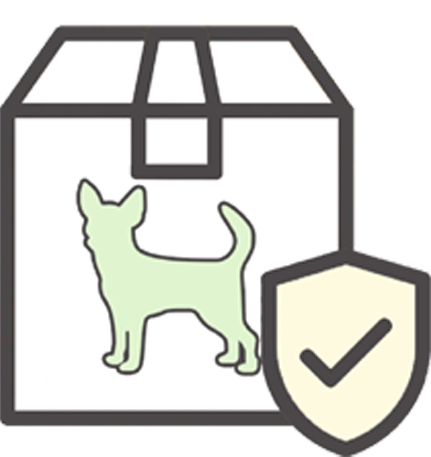Plant Safety Guide: Common Spring Plants and Their Potential Dangers to Dogs
Updated On: Monday, March 24, 2025 11:58:21 AM America/Los_Angeles
Spring brings forth vibrant blossoms and lush greenery, making it a season cherished by many. However, as dog owners, it's essential to be aware that some of these beautiful plants can pose potential risks to our canine companions. In this blog post, we will explore a comprehensive plant safety guide, focusing on common spring plants and their potential dangers to dogs. By understanding which plants to avoid or take precautionary measures with, we can ensure the safety and well-being of our beloved furry friends.

Azaleas and Rhododendrons
Azaleas and rhododendrons are popular flowering plants during the spring season. However, these plants contain toxins called grayanotoxins, which can cause symptoms such as vomiting, diarrhea, drooling, weakness, and even cardiovascular issues if ingested by dogs. It's crucial to prevent access to these plants and seek immediate veterinary attention if ingestion occurs.
Lilies
While lilies are visually stunning, they can be extremely toxic to dogs, especially members of the Lilium and Hemerocallis genera. Ingestion of any part of the lily plant, including petals, leaves, or pollen, can lead to kidney failure in dogs. Symptoms may include vomiting, loss of appetite, lethargy, and increased thirst. Immediate veterinary care is necessary if lily ingestion is suspected.
Tulips and Daffodils
Tulips and daffodils are common spring bulbs that add charm to gardens and landscapes. However, these plants contain substances called alkaloids, which can cause gastrointestinal upset, drooling, and, in some cases, more severe symptoms like cardiac abnormalities and respiratory distress if ingested. Keep your dogs away from these plants, and contact your veterinarian if you notice any concerning signs.
Sago Palm
The Sago Palm, a popular ornamental plant, can be highly toxic to dogs. All parts of the plant, including the seeds, contain cycasin, a toxin that affects the liver. Ingestion can lead to symptoms such as vomiting, diarrhea, seizures, liver failure, and even death. Immediate veterinary attention is crucial if your dog consumes any part of the Sago Palm.
Lily of the Valley
Lily of the Valley is a fragrant plant with bell-shaped flowers. However, it contains cardiac glycosides, which can cause symptoms like vomiting, diarrhea, decreased heart rate, and even cardiac arrhythmias if ingested by dogs. It's important to keep dogs away from this plant and seek veterinary care if ingestion occurs.
Hyacinths
Hyacinths are known for their vibrant and fragrant blooms. However, these plants contain calcium oxalate crystals, which can cause oral irritation, excessive drooling, difficulty swallowing, and gastrointestinal upset if ingested by dogs. Immediate veterinary attention is recommended if ingestion is suspected.
Precautionary Measures
- Familiarize yourself with toxic plants and remove them from your garden or keep them out of reach of your dog.
- Supervise outdoor activities to prevent your dog from accessing potentially dangerous plants.
- Consider creating a designated dog-friendly area in your garden, filled with safe plants and grass for your dog to enjoy.
- Train your dog to avoid eating plants and provide suitable chew toys and treats to redirect their attention.
Additionally, when considering the safety of your dog around plants, it's worth exploring indoor alternatives such as DoggieLawn. DoggieLawn provides a convenient and natural solution for pet owners, offering real grass patches that can be used indoors as a designated potty area for dogs.
DoggieLawn delivers fresh, hydroponically grown grass straight to your doorstep, eliminating the need for artificial turf or messy pee pads. The natural grass surface appeals to dogs' instincts and encourages them to use the designated area for their bathroom needs. This is particularly useful for pet owners who live in apartments or have limited access to outdoor spaces during the spring season.
Remember, while plant safety is important, providing your dog with a suitable potty area is equally essential. DoggieLawn can be a valuable addition to your pet care routine, promoting a healthy and stress-free environment for both you and your furry friend.
Conclusion
As responsible dog owners, it is our duty to ensure the safety of our furry companions, especially when it comes to their interaction with plants. By understanding the potential dangers associated with common spring plants and taking appropriate precautions, we can create a secure environment for our dogs to thrive. Remember, if you suspect your dog has ingested any toxic plant, contact your veterinarian immediately.

